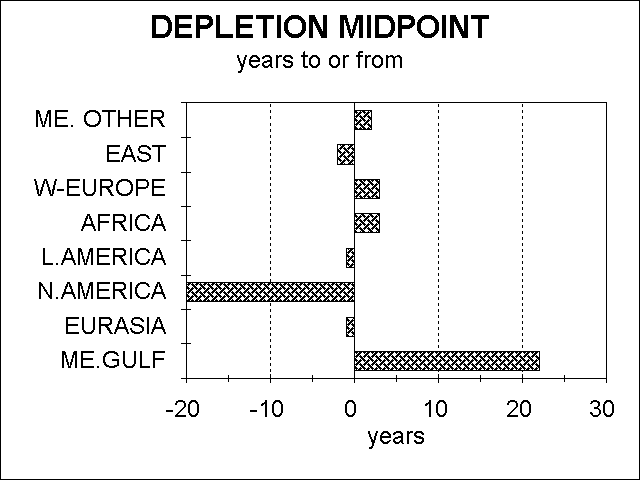

We have now developed an assessment of how much conventional oil there is and how much remains to produce, the Remaining. Oil does not occur in some vast underground cavern from which is could be quickly pumped, but it is held in the minute pore space of the reservoir rocks, in the same way as rising damp can flow through the walls of old stone buildings. It is easy to understand therefore why wells begin to decline as they have to draw on oil farther and farther from the wellbore. The production of an oilfield rises rapidly as new wells are added but then when all the wells are in place declines exponentially at a composite depletion rate. Depletion Rate is a given year's production as a percentage of the remaining reserves at the end of the preceding year. So it is with a geological basin: production rises as new fields are found, and it is normal for the larger ones to be found first. Their depletion rate tends to mask the effects of small late stage additions. Lastly, it is the same for a country, with the larger basins usually being developed first. The natural pattern can of course be modified if production is deliberately held to a certain limit. Thus production of an offshore field may be held at a plateau constrained by the number of wells and the optimal off-take in relation to investments. Likewise, a country may arbitrarily manipulate production to maintain price in a practice known as prorationing, as practiced for example by the Texas Railroad Commission, and less successfully by OPEC with its quotas. In any event, the production of any field starts at zero, rises to a peak (or plateau if artificially constrained) and then falls to zero. The profile of individual fields is normally asymmetrical, being skewed to the left, but a country's peak tends to be symmetrical because it is made up of a progression of individual field profiles. It follows then that peak production will more or less coincide with the midpoint of depletion, except where there are artificial constraints, and even then the midpoint of depletion will roughly coincide with the midpoint of the constrained period. Depletion rate rises during the early production of a field (or country's production) as new wells or fields are added, but tends to stabilize at the midpoint, such that production declines exponentially thereafter, ultimately due to the immutable physics of the reservoir. The midpoint of depletion comes when half the Ultimate has been produced. Since we have now estimated the Ultimate for each country, we are in a position to estimate when peak production will come and plot the subsequent decline. It means that we can divide the world's producing countries into three categories
 |
| Figure 16 |
 |
| Figure 17 |
Production is declining exponentially in these countries. Strictly speaking it would be best to plot the depletion from midpoint at the midpoint depletion rate, and treat any departures from this notional curve as anomalies that eventually even out, because more production early has to be matched by less production later, given the fixed Ultimate. But in practice one can as well take the current depletion rate to keep it simple, because in most cases the current rate differs only slightly from the midpoint rate. Doing so also makes the short term prognosis a little more realistic.
A few countries, save those in the Middle East Gulf region, are still a year or two away from midpoint. If actual near term production forecasts are known, they can be fed in, but otherwise it will suffice to apply an arbitrary increase of, say, 5%, because it applies only for a few years. Once they reach midpoint, they decline exponentially at the midpoint depletion rate.
As outlined above, about half the Remaining lies in the five countries of the Middle East (Gulf) Region, which are at a very early stage of their depletion. These countries are therefore natural candidates to perform a swing role, making up the difference between world demand under alternative scenarios and what the other countries can produce under the model. It is role that they can perform for about 15 years until they themselves also reach their midpoint. It would also be an option to include certain other countries, such as Venezuela or Mexico, in the swing category, but on balance it seems better to restrict the swing role to the Middle East Gulf.